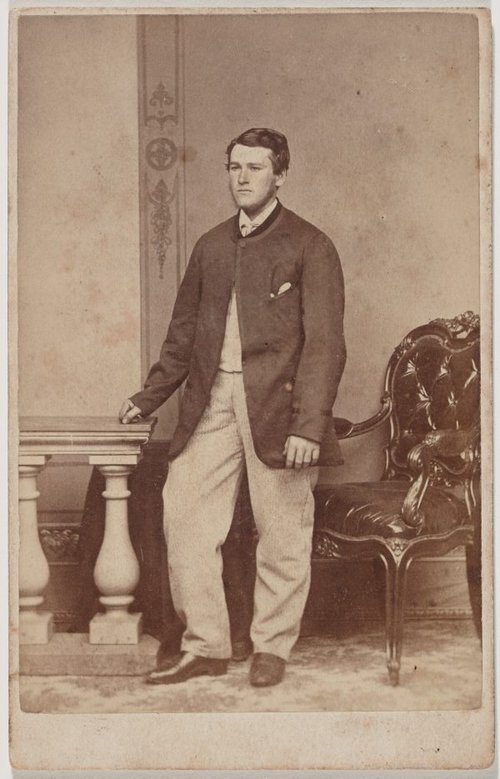-
Details
- Date
- 1866-1871
- Media category
- Photograph
- Materials used
- carte de visite
- Dimensions
- 9.2 x 6.0 cm image; 10.2 x 6.4 cm mount card
- Signature & date
Not signed. Not dated.
- Credit
- Purchased 2014
- Location
- Not on display
- Accession number
- 336.2014
- Copyright
- Artist information
-
Frederick Frith
Works in the collection
- Share
-
-
About
Frederick Frith was a successful portrait painter and professional photographer in colonial Melbourne and Hobart. Born in the UK, he was in Melbourne by 1853 after practicing, he claimed, in London, Brighton, Scotland and Ireland. Frith initially established himself as a portrait and animal painter, moving to Hobart Town in 1854. On his arrival in Hobart, Frith collaborated briefly with the Duryea brothers and Archibald MacDonald, and then with John Matthieson Sharp from 1855 to 1856. Together, Frith and Sharp made coloured portraits and landscape views, Sharp taking the photographs and Frith colouring them. Frith established his own studio in 1856, and by 1859 was producing the first commercial albums of views available in Tasmania, entitled 'Tasmania illustrated'. In 1857, Frederick’s brother Henry joined his enterprise and the pair operated as Frith Brothers, with an additional studio in Launceston. Frith moved back to Victoria in 1862 while his brother Henry remained in Tasmania. In Launceston, Henry was involved in a public stoush with Alfred Bock over the correct use of the sennotype process. He continued to operate until in 1867, when he sold his negatives to George Cherry and moved to New Zealand.
A carte de visite is a stiff card of about 10 x 6.4 cm, with an attached paper photograph, invented in 1854 by André-Adolphe-Eugène Disderi. They were introduced into Australia in 1859 by William Blackwood with albums arriving in 1860, aiding the collection and distribution of multiple cartes. Cartes were usually portraits and were made by the millions worldwide. Multi-lens, or ‘multiplying’ cameras were introduced in the 1860s, which were capable of producing from 2 to 32 images in quick succession, dramatically increasing the number of cartes de visite that could be made from a single photographic plate. They were easily reproduced by making paper contact prints from the glass plates, which were then cut and pasted to card.
-
Exhibition history
Shown in 2 exhibitions
The photograph and Australia, Art Gallery of New South Wales, Sydney, 21 Mar 2015–08 Jun 2015
The photograph and Australia, Queensland Art Gallery, South Brisbane, 04 Jul 2015–11 Oct 2015
Hold still: the photographic performance, Art Gallery of New South Wales, Sydney, 12 May 2018–29 Jul 2018


